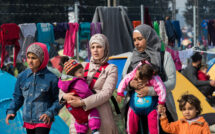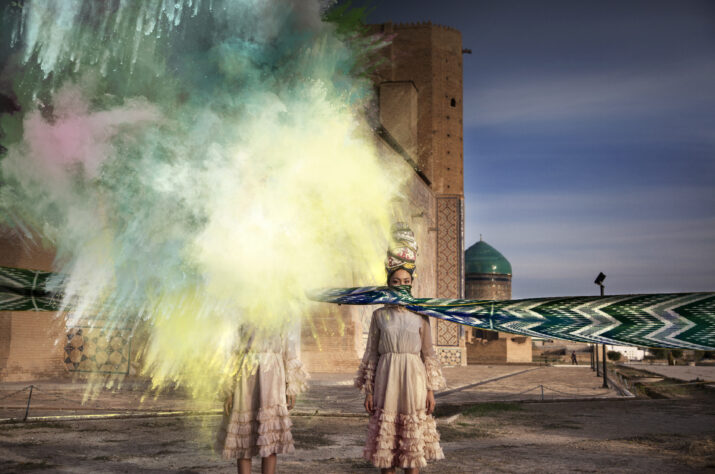
This is part of our special feature, Thinking Eurasia Now.
In this exhibit, two artists cross-examine pasts and presents in Kazakhstan by positioning post-colonial identities at the juncture of different timelines and questioning cultural agency, resistance, and potential. The work of Saule Suleimenova and Almagul Menlibayeva embodies on the one hand the legacies of decades of Soviet political domination and on the other hand the cultural resilience of the Indigenous peoples of Eurasia in the face of cultural oppression. In the series I am Kazakh, Suleimenova uses paint on archival and contemporary photographs as she seeks to decolonize Kazakhness through an approach to aesthetics that includes the process of grattography. She interrogates modernity in post-Soviet spaces by superimposing different temporalities of places and peoples and transcends memory in her portraying of the different facets of what it means to be Kazakh today, with all the contradictions and tensions that this entails. As she makes the layers of contemporary Kazakh identity explicit, she reveals how Steppe cultures, capitalism, and urbanization have been articulated since the fall of the Soviet Union. The past and the present become one, while the future seems to remain uncertain. Likewise, Almagul Menlibayeva critically explores the formation of post-colonial post-Soviet identities by showing the transformation of society in Central Asia. The artist explains that she attempts to express “the nature of a specific Egregore, a shared cultural psychic experience, which manifests itself as a specific thought-form among the people(s) of the ancient, arid and dusty Steppes between the Caspian Sea, Baikonur and Altai.” In My Silk Road to You, the artist recruits nomadic imaginations to stage fantasy worlds in which memory—real or (re)invented—intermingles with contemporary cultural realities. Simultaneously sensitive and explosive, Menlibayeva’s art captures the dynamism of Kazakh past resistance and looks to a future cultural and spatial reappropriation through feminine characters. Both artists are committed to conveying the coming into their own of the peoples of Central Asia and to depicting the combative awakening taking place in the region in the twenty-first century.
—Hélène B. Ducros for EuropeNow
Saule Suleimenova: Astanaline / I am Kazakh
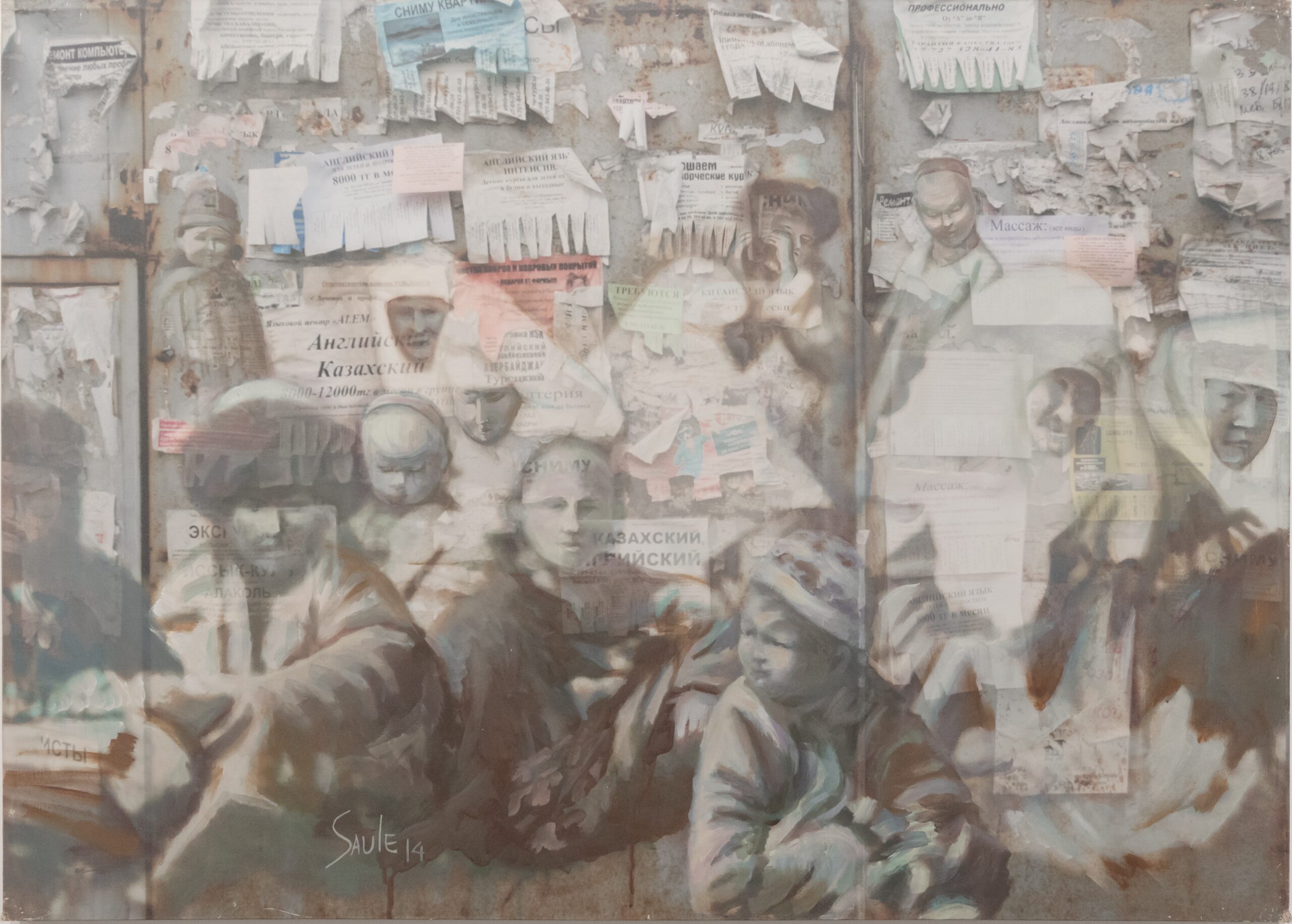
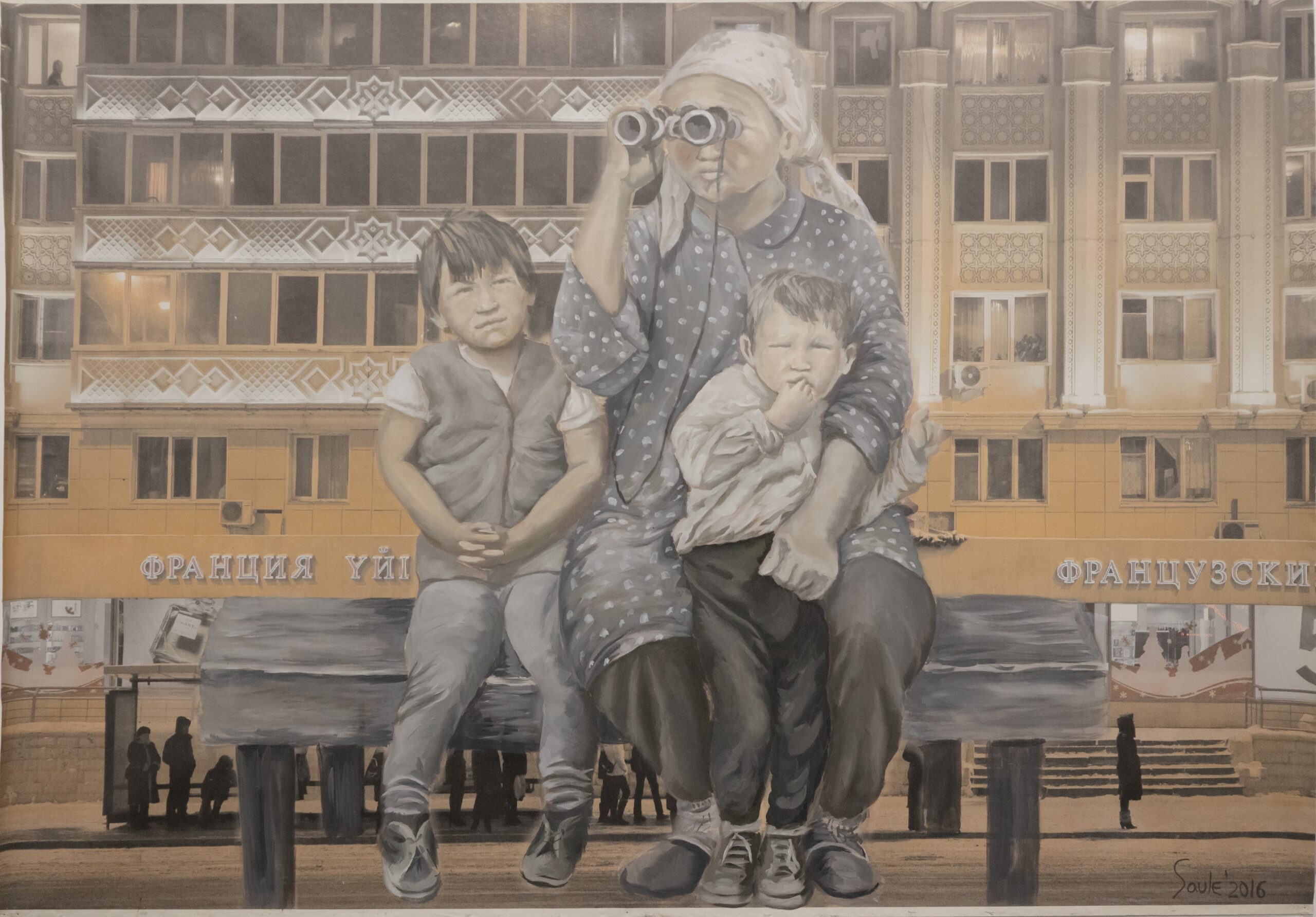
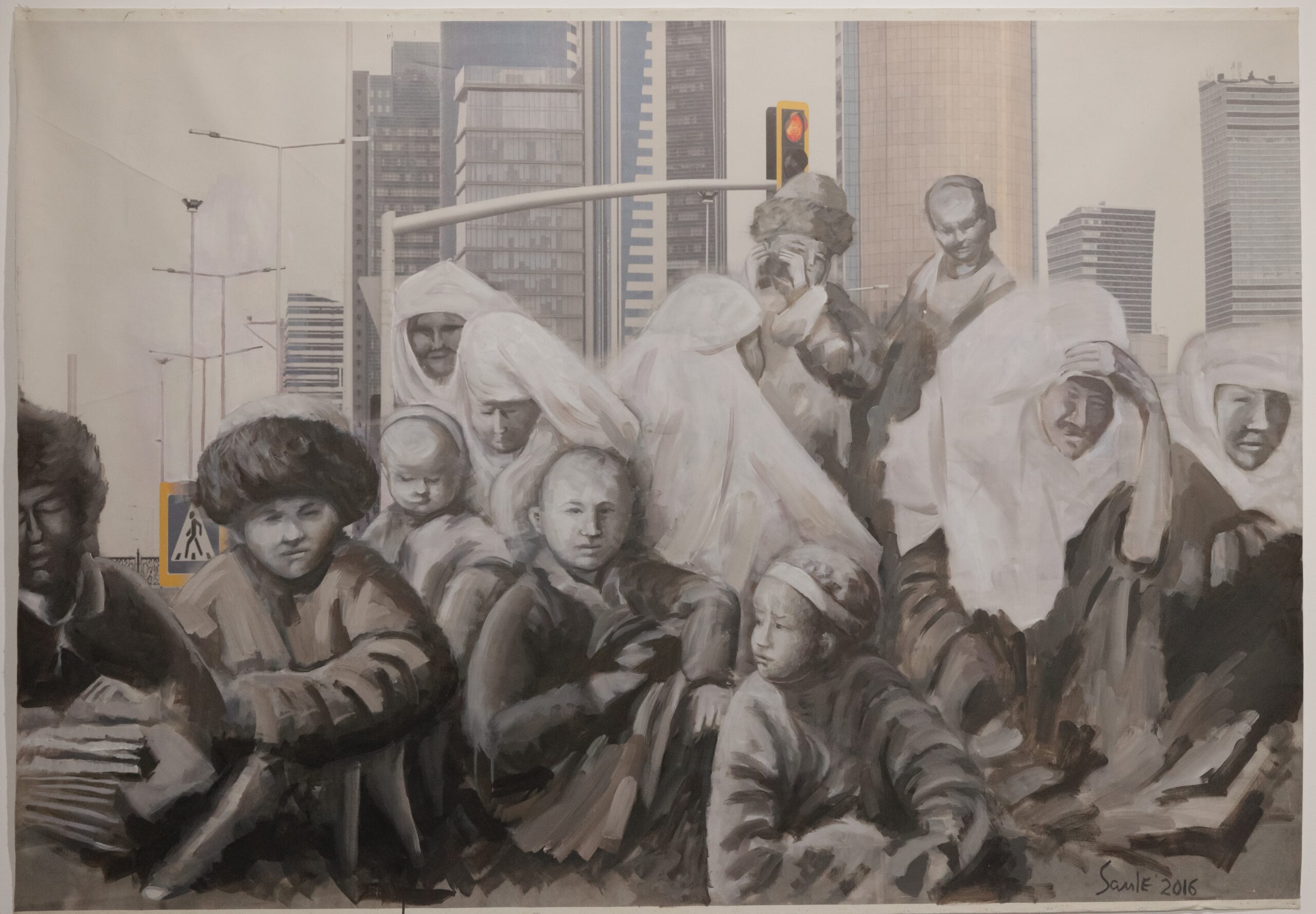
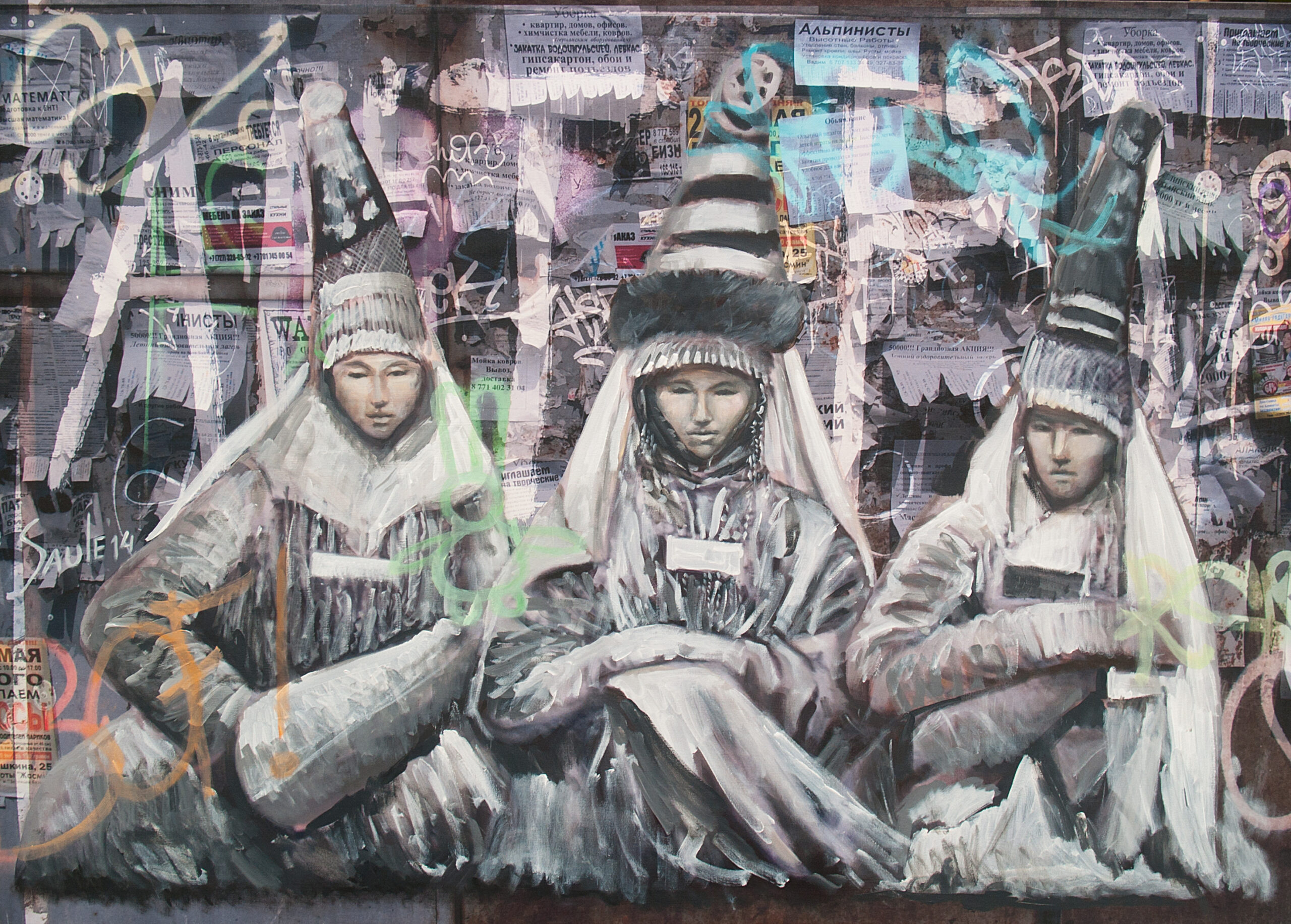
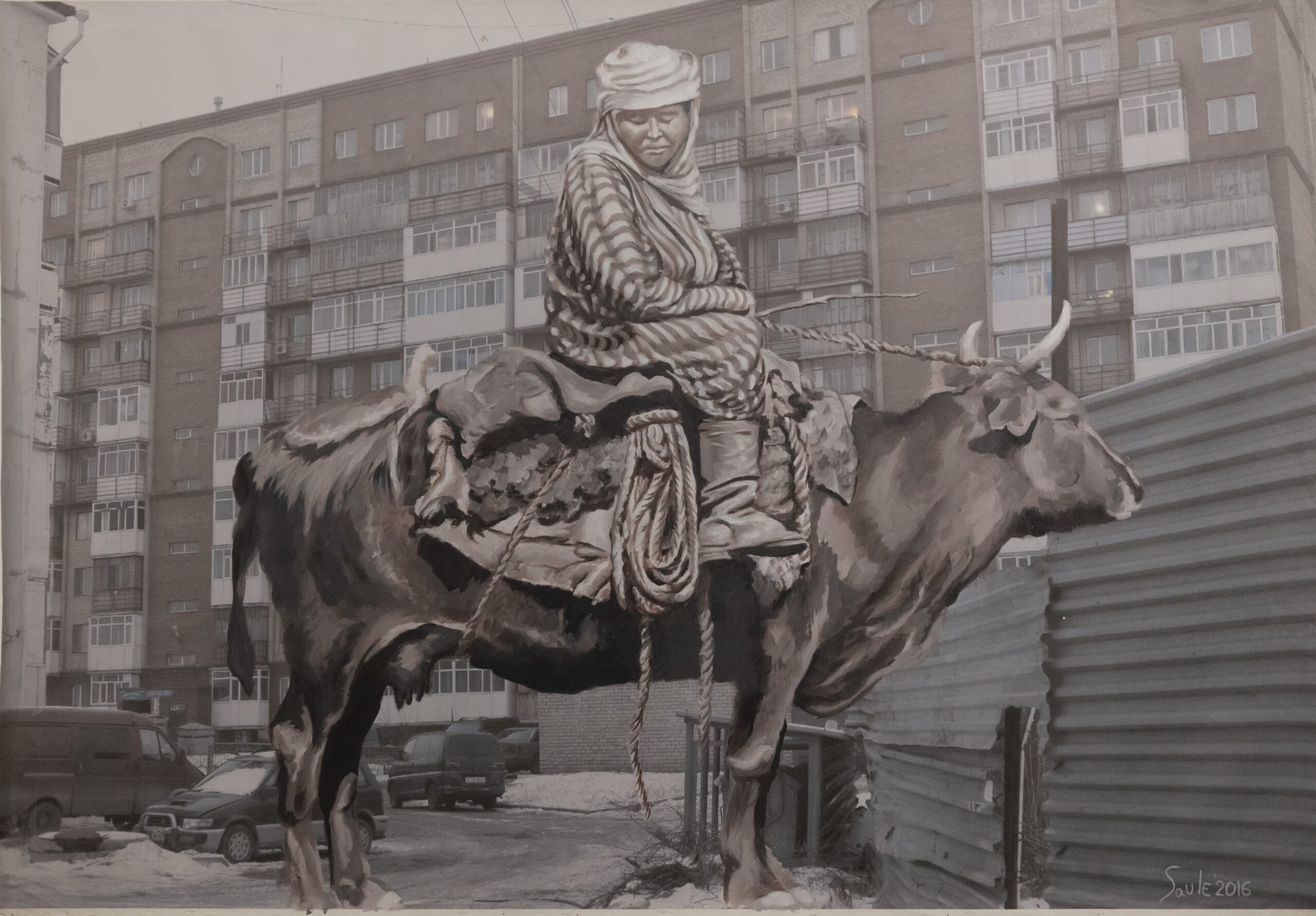
Almagul Menlibayeva: My Silk Road to You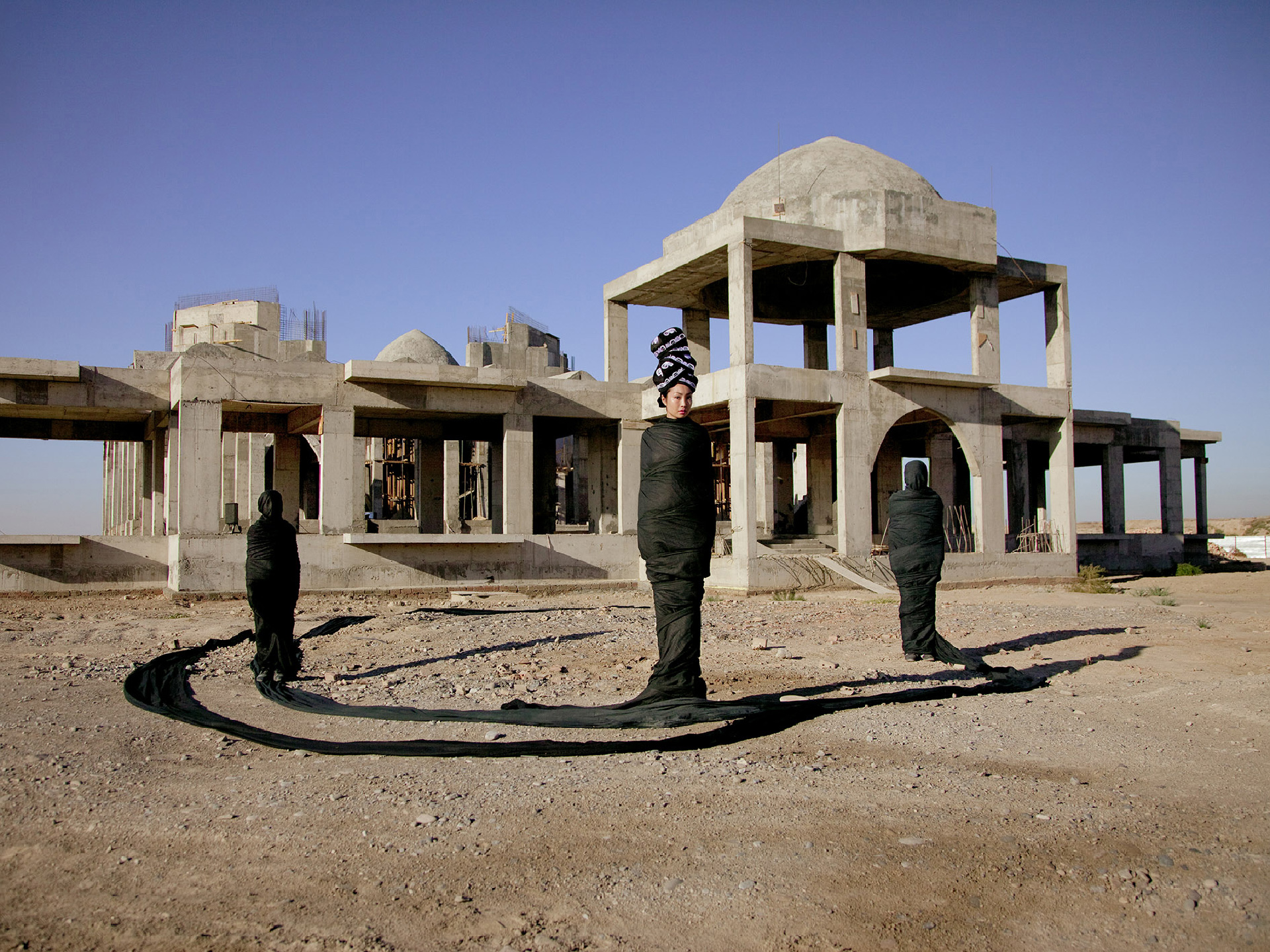
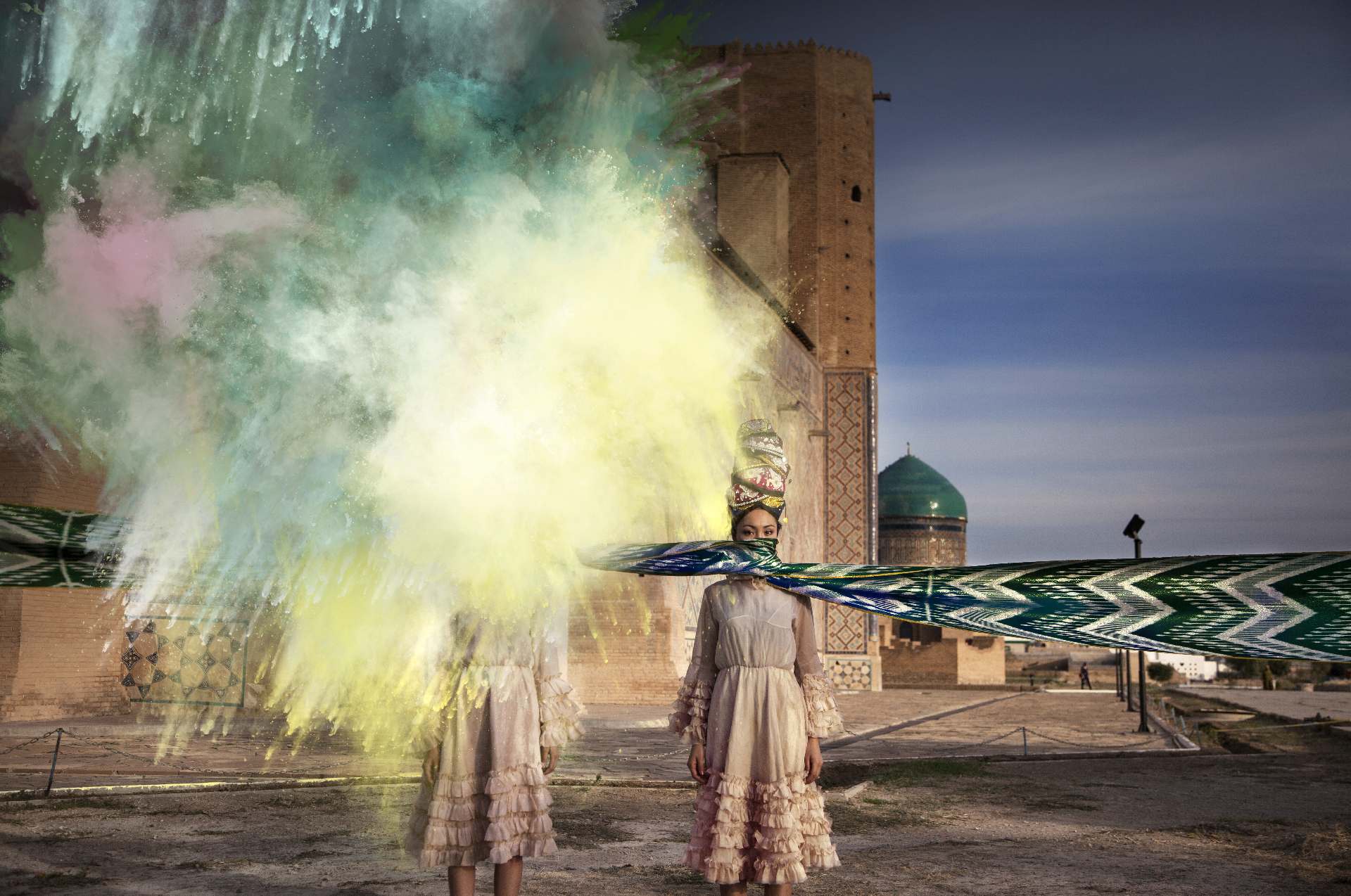
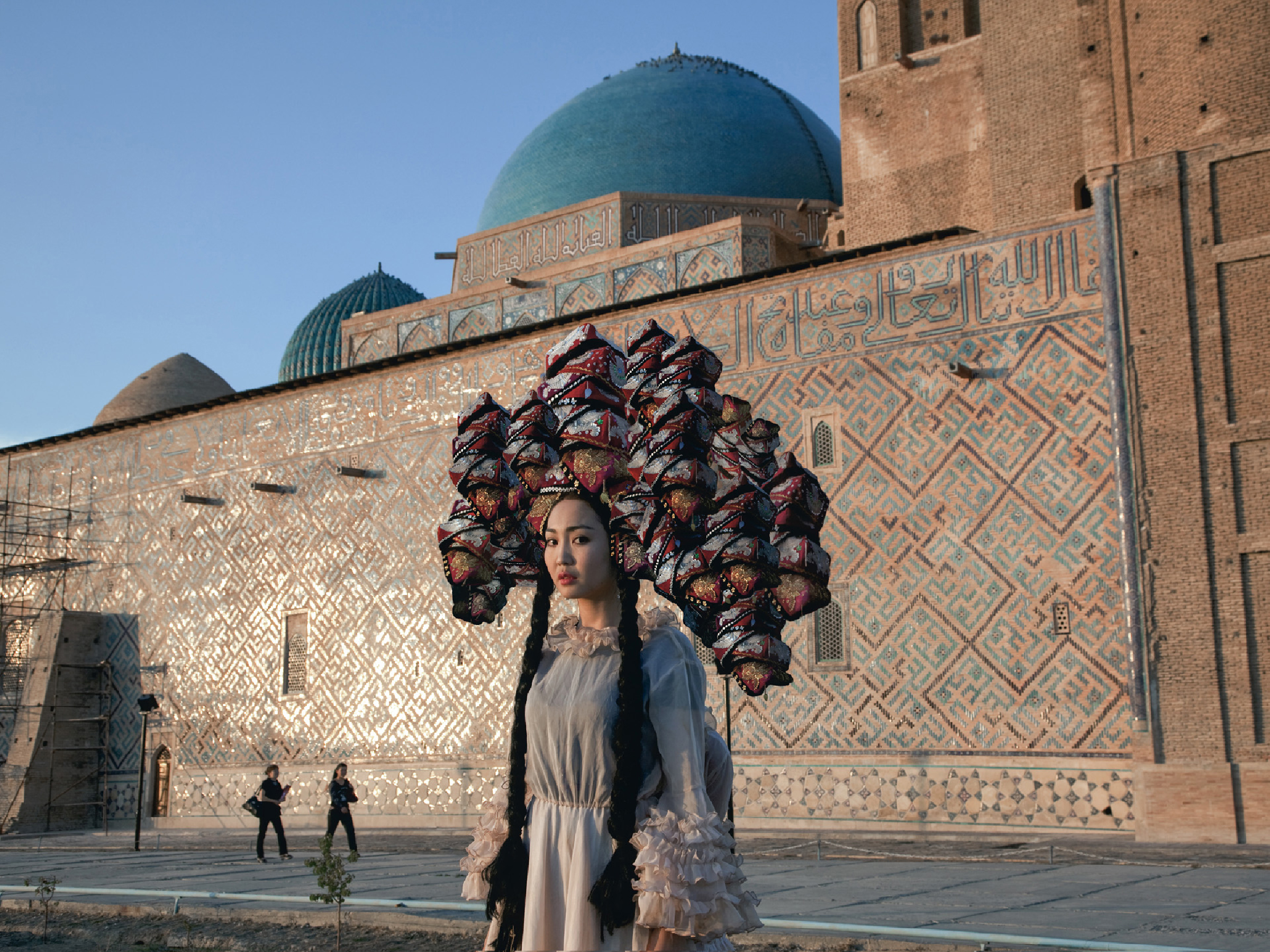
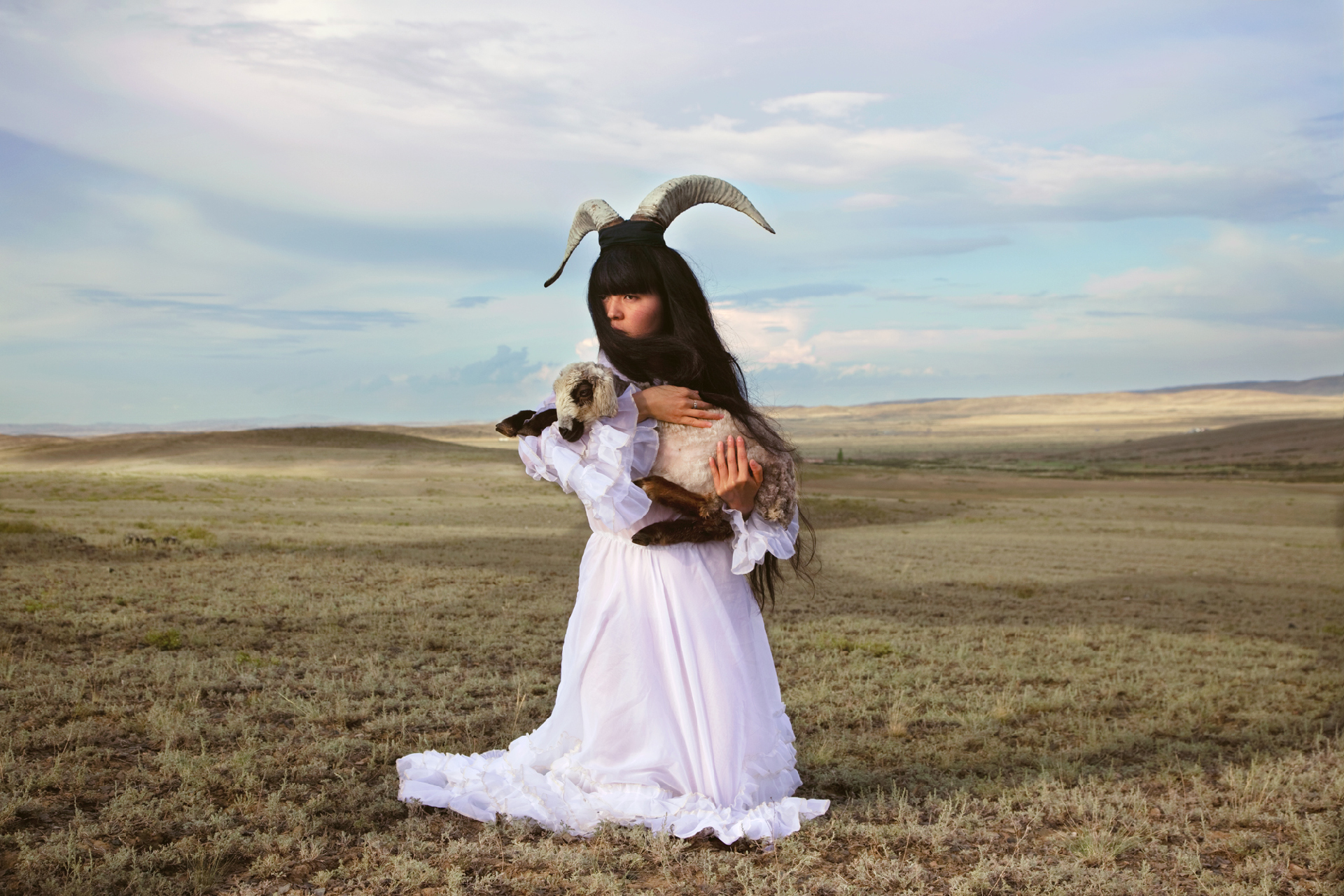
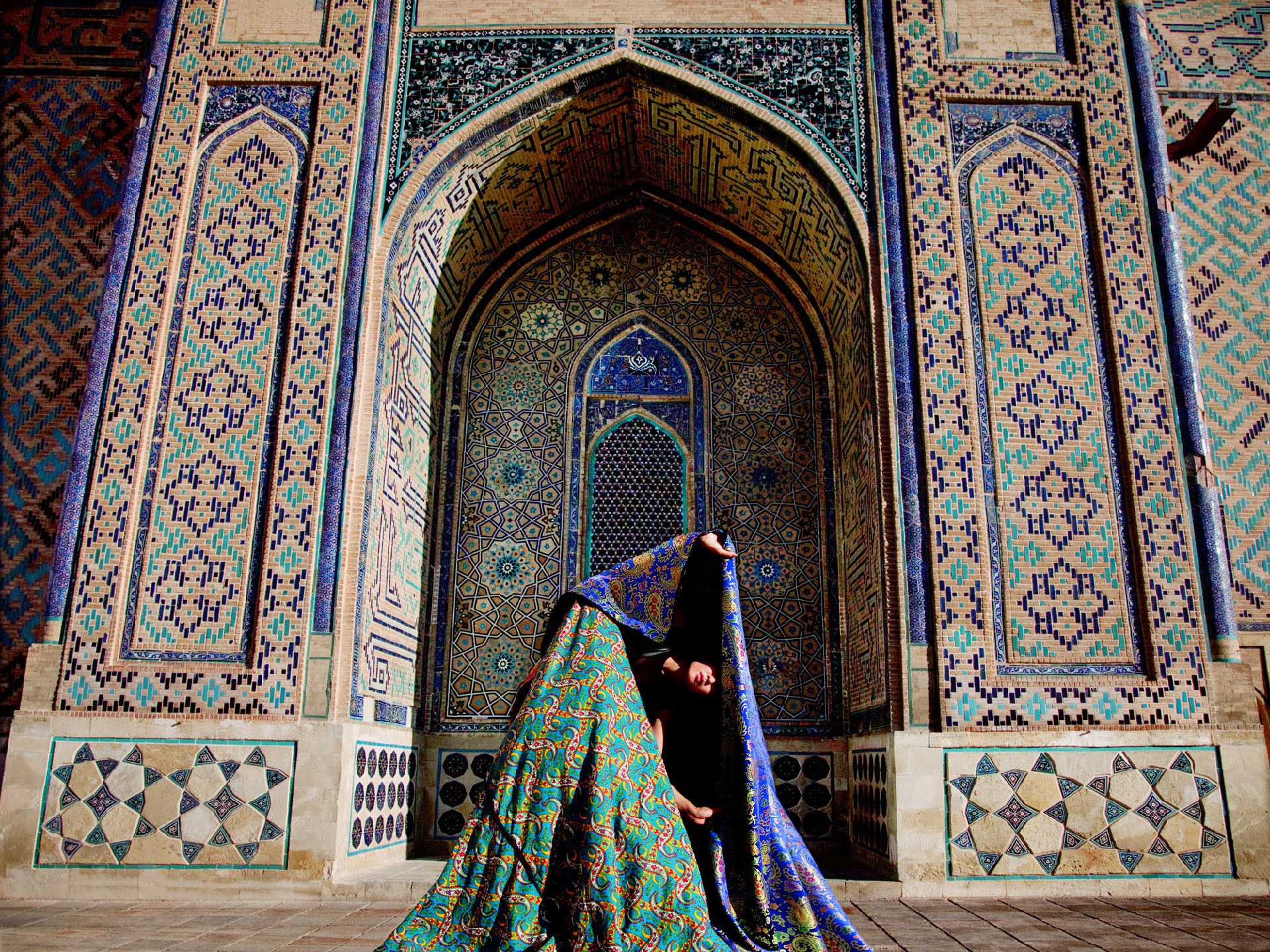
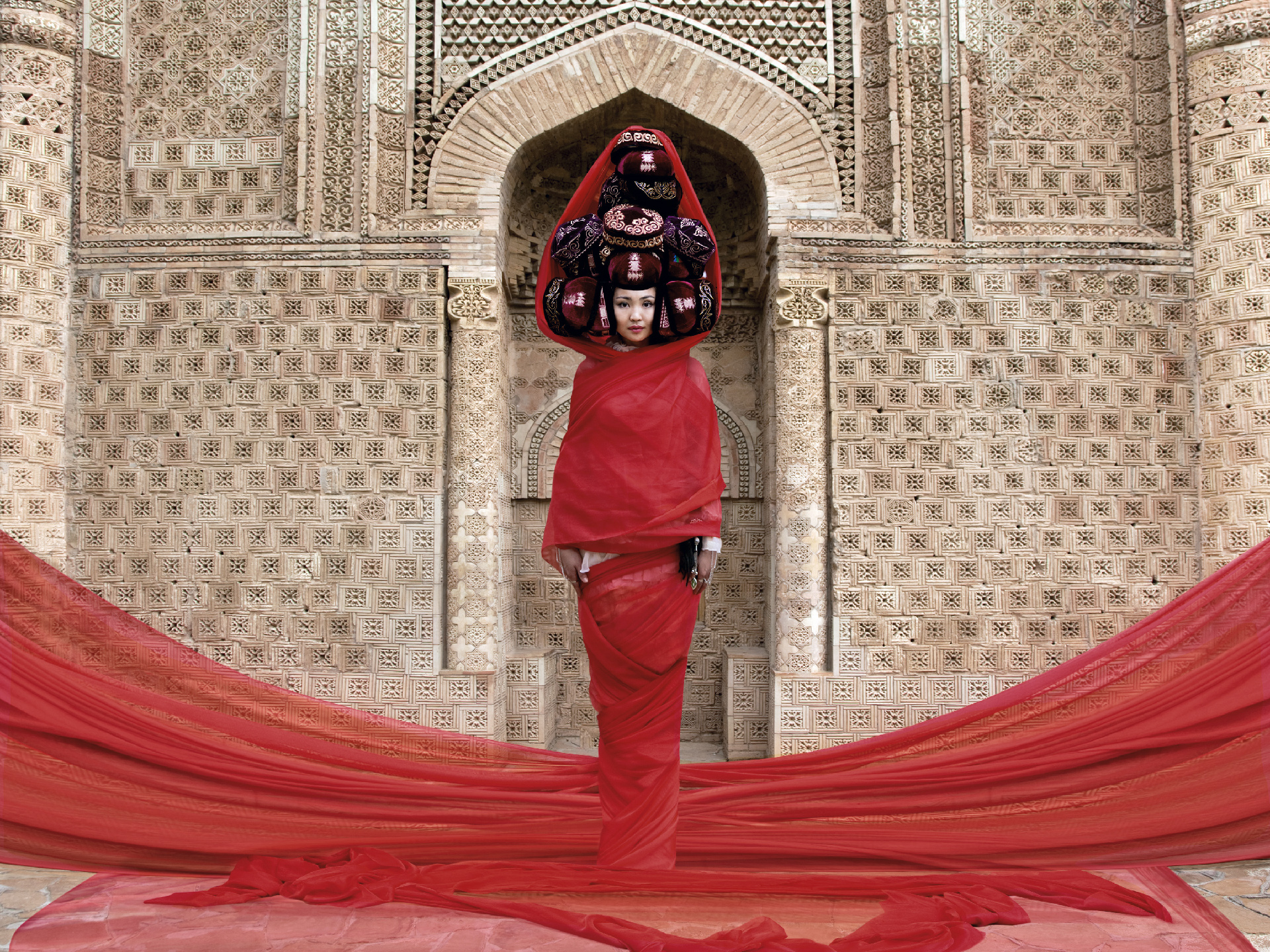
Saule Suleimenova is a visual artist who works on the edge of different techniques and media, including painting on photography and wax on paper. She has also been working on plastic bags collage and cellophane painting. She has had a strong social impact in Kazakhstan, where she participates in educational, ecological, and other social events. Her work has been shown at the Self Festival of the 56th Venice Biennale, Manifesta 11 in Zürich, Second Moscow biennale, Christie’s auction in London, UK, East of Nowhere exhibition in Turin, Foundation 107, One Belt One Road exhibition of Hong Kong Women Federation, and many other local and international projects.
Almagul Menlibayeva is a contemporary artist born in Almaty, Kazakhstan. Her work in multi-channel video, photography and mixed media installation has won many awards. She lives and works in Germany and Kazakhstan. Her work has been featured at the Sydney Biennale, Australia; the Venice Biennale; the Moscow Biennale, Russia; the Gangwon International Biennale, South Korea. Her most recent solo exhibitions include Green, Yellow, Red, and Green again, TSE gallery, Astana, Kazakhstan (2018); Transformation, Grand Palais, Paris, France (2016-2017); My Silk Road to You, Lexing Art, Miami, USA (2016); Union of the Fire and Water, curator Suad Garaeva, 56th Venice Biennial, Venice, Italy (2015).
Hélène B. Ducros, JD, PhD, is a human geographer whose research has focused on placemaking through heritage-making, landscapes of remembrance and commemoration, and the circulation of cultural models of heritage preservation.
Published on September 12, 2023.


